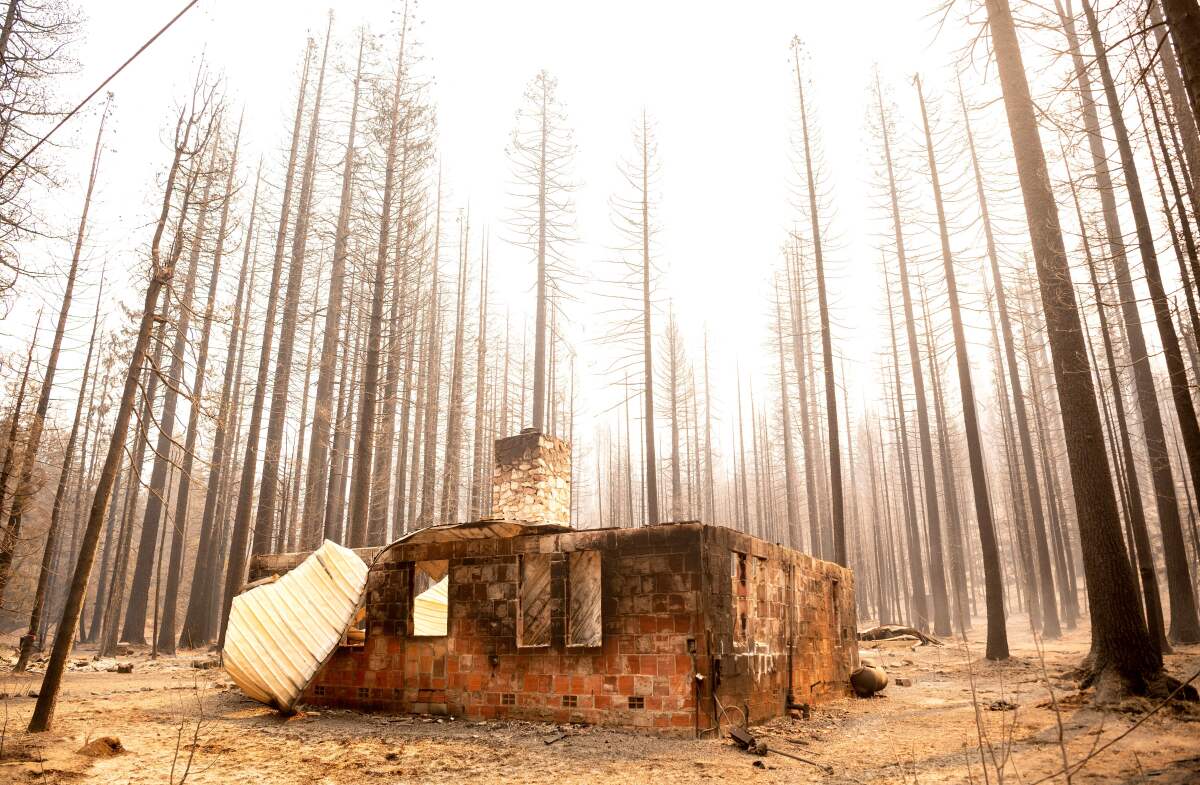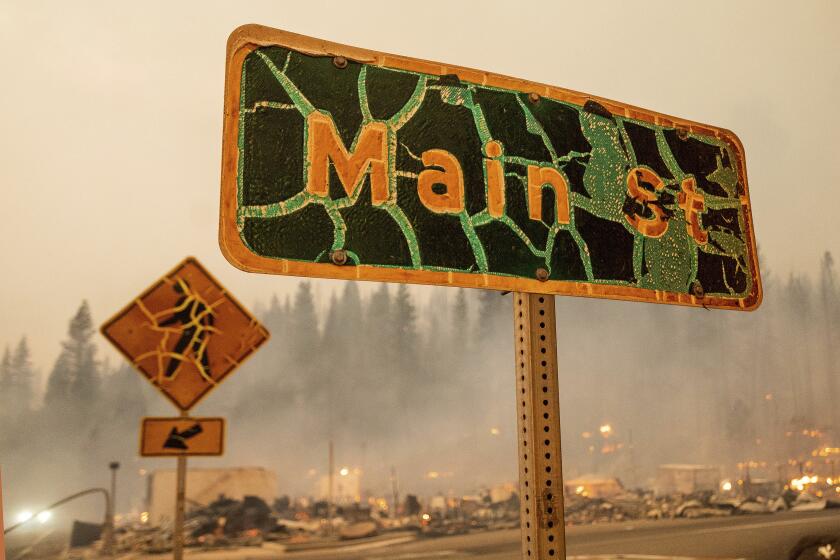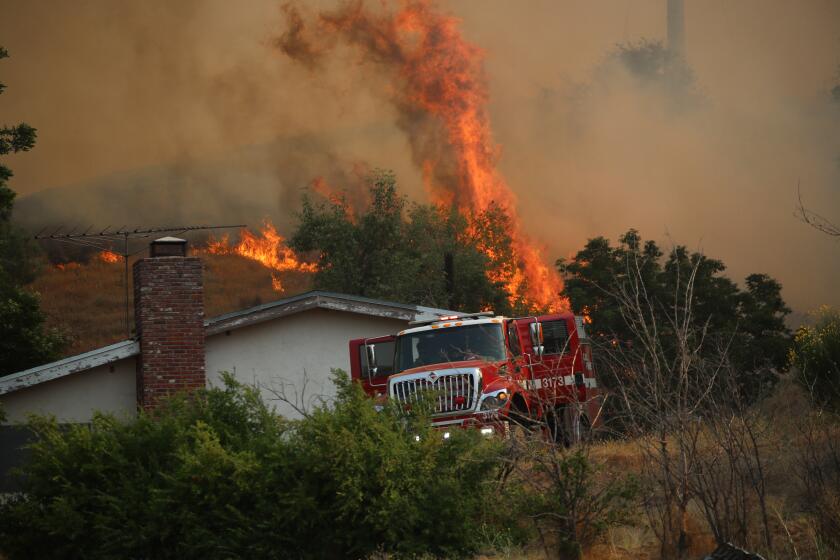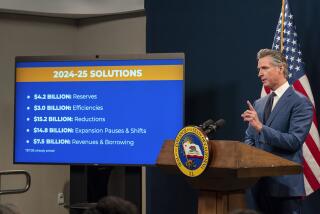Column: Who is to blame for California’s budget woes? Try Mother Nature

SACRAMENTO — California has officially entered the era of climate-driven economic insecurity.
On Wednesday, Gov. Gavin Newsom laid out his new budget, facing a nearly $38-billion shortfall.
That missing money is mostly due to lower-than-expected tax revenue on capital gains — the stock and investment earnings of the Golden State’s wealthiest folks weren’t quite what were expected.
But, unlike most years when state officials have a grasp by April, when taxes are usually filed, of how much money California can responsibly spend, last year was different.
Mother Nature slammed the state in winter and spring with record snow and storms that flooded entire towns such as Planada and Pajaro. Capitola was hit with a bomb cyclone that all but destroyed the pier. Tulare Lake reappeared in the Central Valley, submerging homes and crops and revealing the fragility of an expensive levee. The damage of that extreme weather cost $4.6 billion and took 22 lives, according to the National Centers for Environmental Information.
Our weather was so volatile and devastating that even the IRS had mercy, delaying the deadline for the majority of the state’s residents to file taxes first to October and then to November.
Which meant that no one really knew (though certainly there were indicators) how much we were spending that we didn’t really have until a couple of months ago, when those taxes were finally tallied and came up short.
“This has been a hard year,” Newsom told the reporters gathered to hear his plan, and no one is arguing that.
California needs a plan for how and where we will live in the future.
But it also may not be an unusual year, as we move forward into the economic realities of climate change. Sure, the stock market is projected to rise, inflation is down and employment figures are up. By all measurable standards, the economies of California and the United States are primed for a good year, regardless of public sentiment that, faced with higher bills and a nagging sense of uncertainty, isn’t quite ready to embrace a positive outlook.
But the severity of our weather is not likely to abate, and dealing with the unrelenting price tag of storms, floods, fires, rising sea levels, extreme heat, mudslides and more is going to change what we can and can’t afford in California. Consumers see this already with home and car insurance — rates are rising based on projections of more climate disasters to come.
At the same time, costs of rebuilding or maintaining homes in high-risk zones are increasing as well, be it in places where the sea is encroaching on mansions or where flames threaten double-wides in fire-prone forests. Even keeping those homes hot or cool is getting tougher to pay for.
That means its harder to stay housed at any income level. More than 3 million Americans, mostly in storm-heavy states such as Texas and Florida, have already moved because of weather, a trend of climate migration expected to increase as the cost of living in dangerous and devastated places becomes untenable.
The federal government recently released its National Climate Assessment, which detailed the many ways that climate and economy are linked, and the many ways the situation will likely get worse.
In the 1980s, the report said, “the country experienced, on average, one (inflation-adjusted) billion-dollar disaster every four months. Now, there is one every three weeks, on average.”
Every three weeks, a billion-dollar disaster. In the last few years, that added up to 89 billion-dollar events. And that billion-dollar amount doesn’t include the emotional and economic tolls of deaths and injuries, the families traumatized, generational wealth literally up in smoke, poor communities — often people of color — left without drinking water or roads.
The costs of climate change aren’t just the obvious ones, though. Newsom’s budget has cuts — though the next few months will be all about the governor and the Legislature hashing out exactly what those will be. Newsom is suggesting reducing spending by $8.5 billion, the largest chunk of which would come out of climate programs. But also losing money would be housing programs, the Middle Class Scholarship fund and other reductions likely to be unpopular.
Newsom is also suggesting taking $13 billion out of our rainy day fund, which makes sense, though also is likely to be an unpopular move.
But it’s been a rainy year.
Even as insurers flee California, lawmakers couldn’t hammer out a deal to fix the collapsing market. Inaction will only make disasters more expensive.
If there is a takeaway from Newsom’s proposal, it’s that we need to plan for more rainy years, with more intensity.
This year, that means “belt tightening,” as Newsom put it. A $39-billion deficit is painful, but not insurmountable.
But we need to save more in our reserve funds to plan for disasters we know are coming, which seems like common sense but is nearly impossible under existing rules. I won’t bore you with the details of the Gann Limit, but suffice it to say that saving more in the high-revenue years is difficult because of a budget rule set in the 1970s, long before billionaires with stock portfolios that rival the wealth of small nations became California’s main revenue source.
While our reserve fund is robust, states including Wyoming, which also has a volatile revenue model, have funds that are much stronger than ours. Wyoming could run for nearly a year off the money it has saved. Obviously, California is bigger, but we have saved only enough to last less than three months.
Projecting future revenue, for people and for states, is always a bit of a crystal-ball endeavor. But climate change is going to cost us dearly, one way or another.
California should start saving now for what is an inevitable debt to come.
More to Read
Sign up for Essential California
The most important California stories and recommendations in your inbox every morning.
You may occasionally receive promotional content from the Los Angeles Times.













